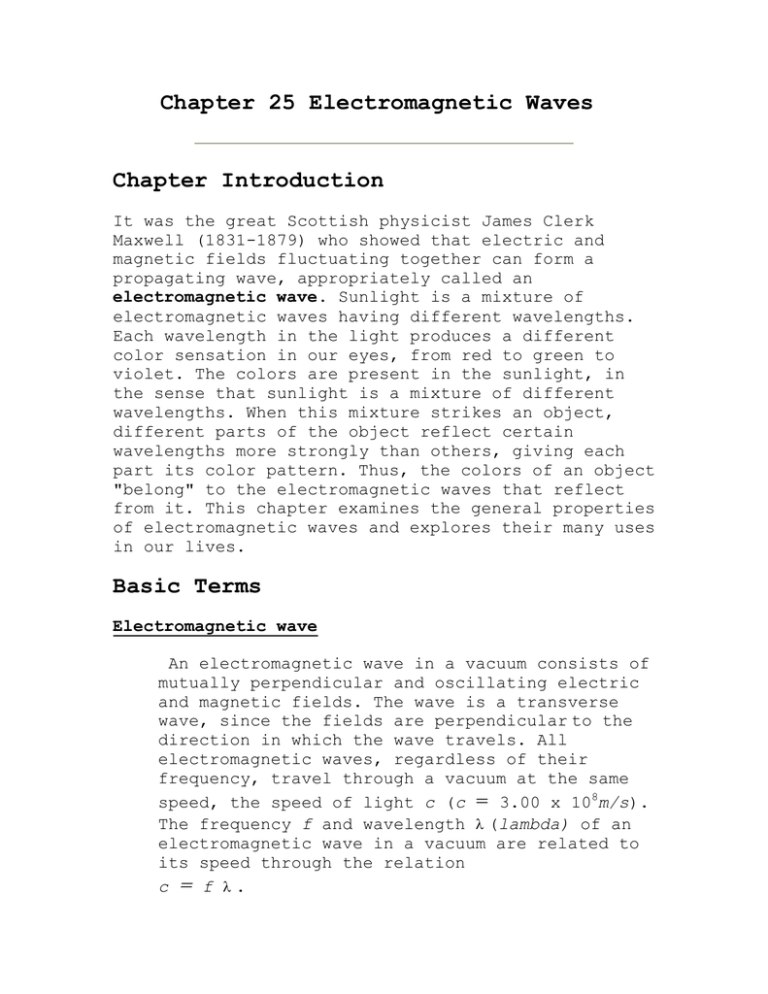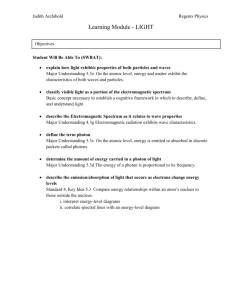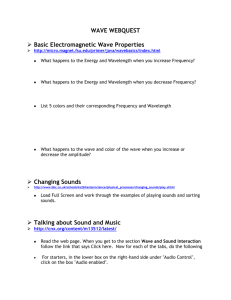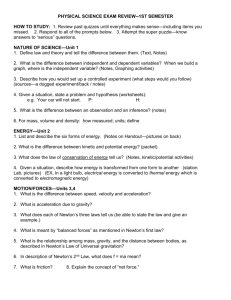Chapter 25 Electromagnetic Waves Chapter Introduction
advertisement

Chapter 25 Electromagnetic Waves Chapter Introduction It was the great Scottish physicist James Clerk Maxwell (1831-1879) who showed that electric and magnetic fields fluctuating together can form a propagating wave, appropriately called an electromagnetic wave. Sunlight is a mixture of electromagnetic waves having different wavelengths. Each wavelength in the light produces a different color sensation in our eyes, from red to green to violet. The colors are present in the sunlight, in the sense that sunlight is a mixture of different wavelengths. When this mixture strikes an object, different parts of the object reflect certain wavelengths more strongly than others, giving each part its color pattern. Thus, the colors of an object "belong" to the electromagnetic waves that reflect from it. This chapter examines the general properties of electromagnetic waves and explores their many uses in our lives. Basic Terms Electromagnetic wave An electromagnetic wave in a vacuum consists of mutually perpendicular and oscillating electric and magnetic fields. The wave is a transverse wave, since the fields are perpendicular to the direction in which the wave travels. All electromagnetic waves, regardless of their frequency, travel through a vacuum at the same speed, the speed of light c (c = 3.00 x 108m/s). The frequency f and wavelength λ (lambda) of an electromagnetic wave in a vacuum are related to its speed through the relation c = f λ. Electromagnetic spectrum The series of electromagnetic waves, arranged in order of their frequencies, is called the electromagnetic spectrum. The electromagnetic spectrum is composed of waves that are known as radio waves, infrared radiation, visible light, ultraviolet radiation, X-rays, gamma rays. The human eye and brain perceive different frequencies or wavelengths as different colors. Speed of light The wave speed of an electromagnetic wave in a dielectric medium is given by v = 1/(ε0µ0)1/2, where ε0 and µ0 are the permittivity and permeability of the dielectric respectively. Electromagnetic waves cannot propagate within a conductor; they are totally reflected when they strike a conducting surface. Visible light Visible light has frequencies between about 4.0 x 1014 Hz and 7.9 x 1014 Hz. Polarizing materials Polarizing materials allows only the component of the wave's electric field along one direction to pass through them. The preferred transmission direction for the electric field is called the transmission axis of the material. When unpolarized light is incident on a piece of polarizing material, the transmitted polarized light has an intensity that is one-half that of the incident light.







